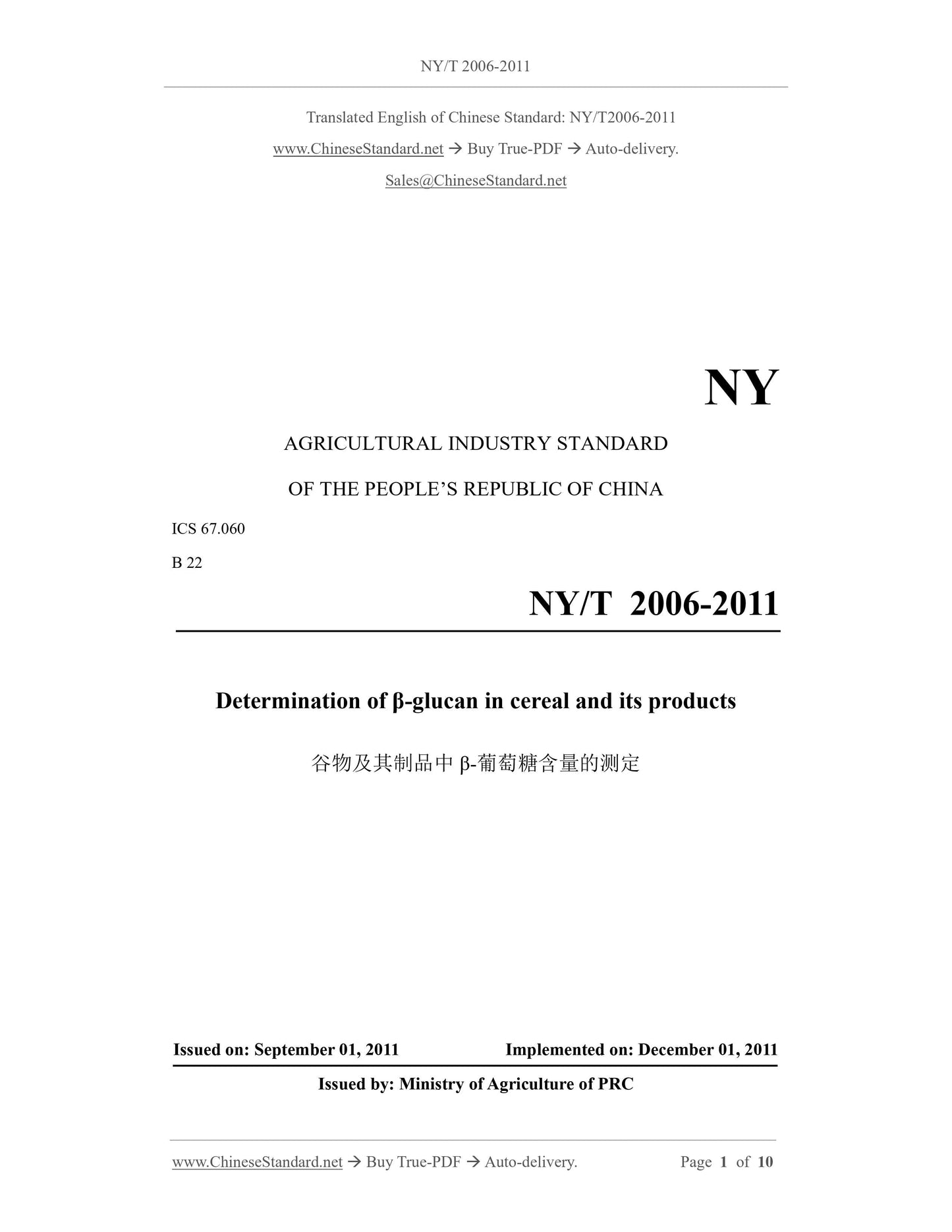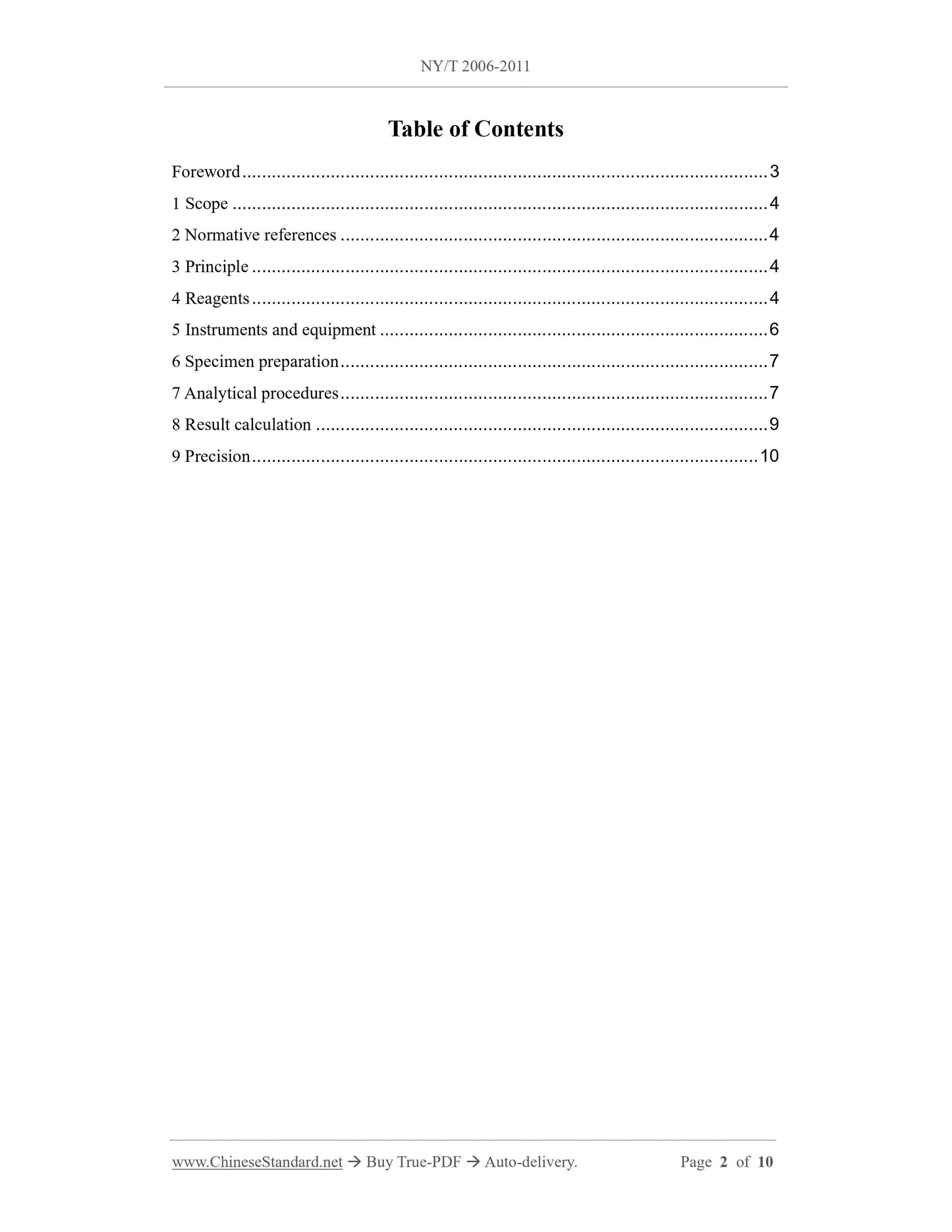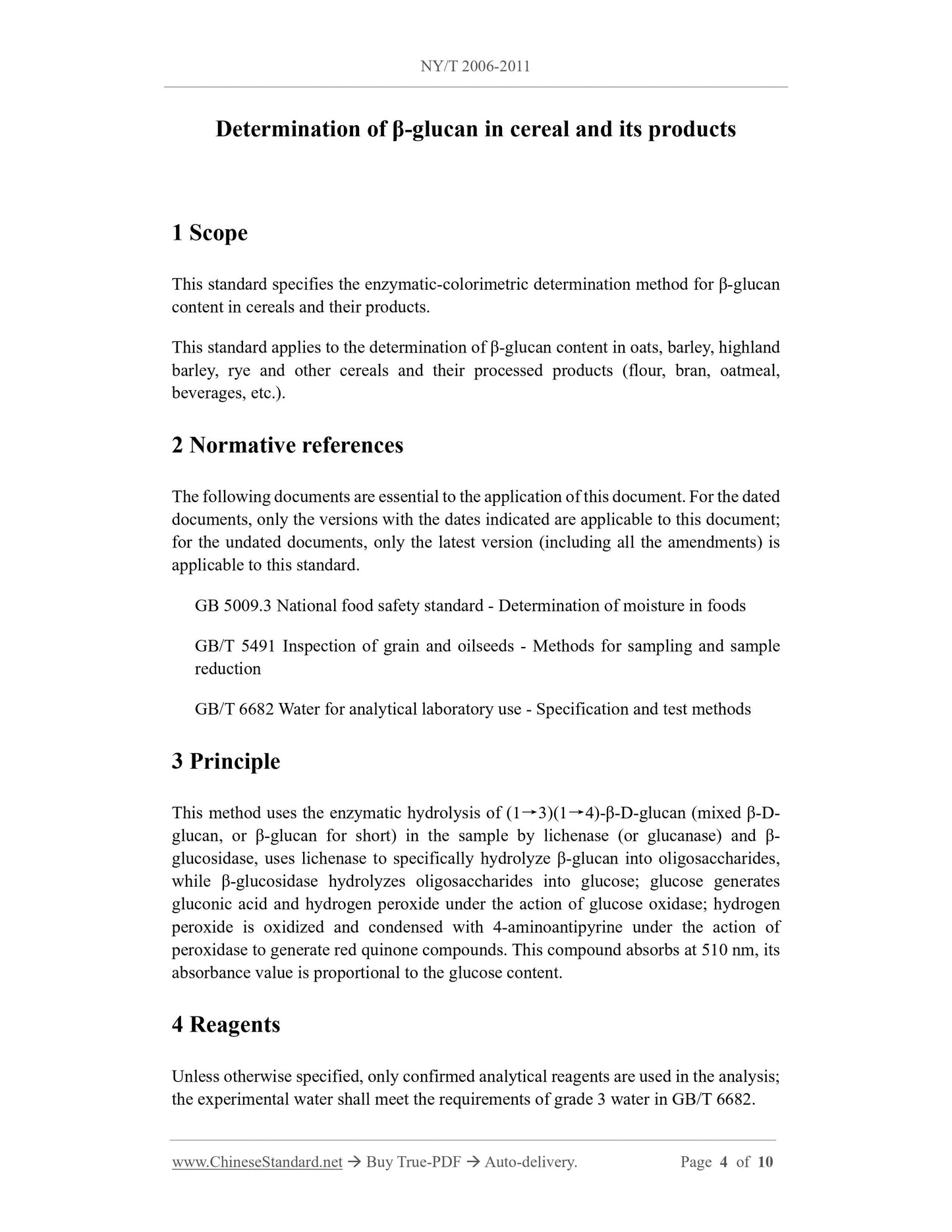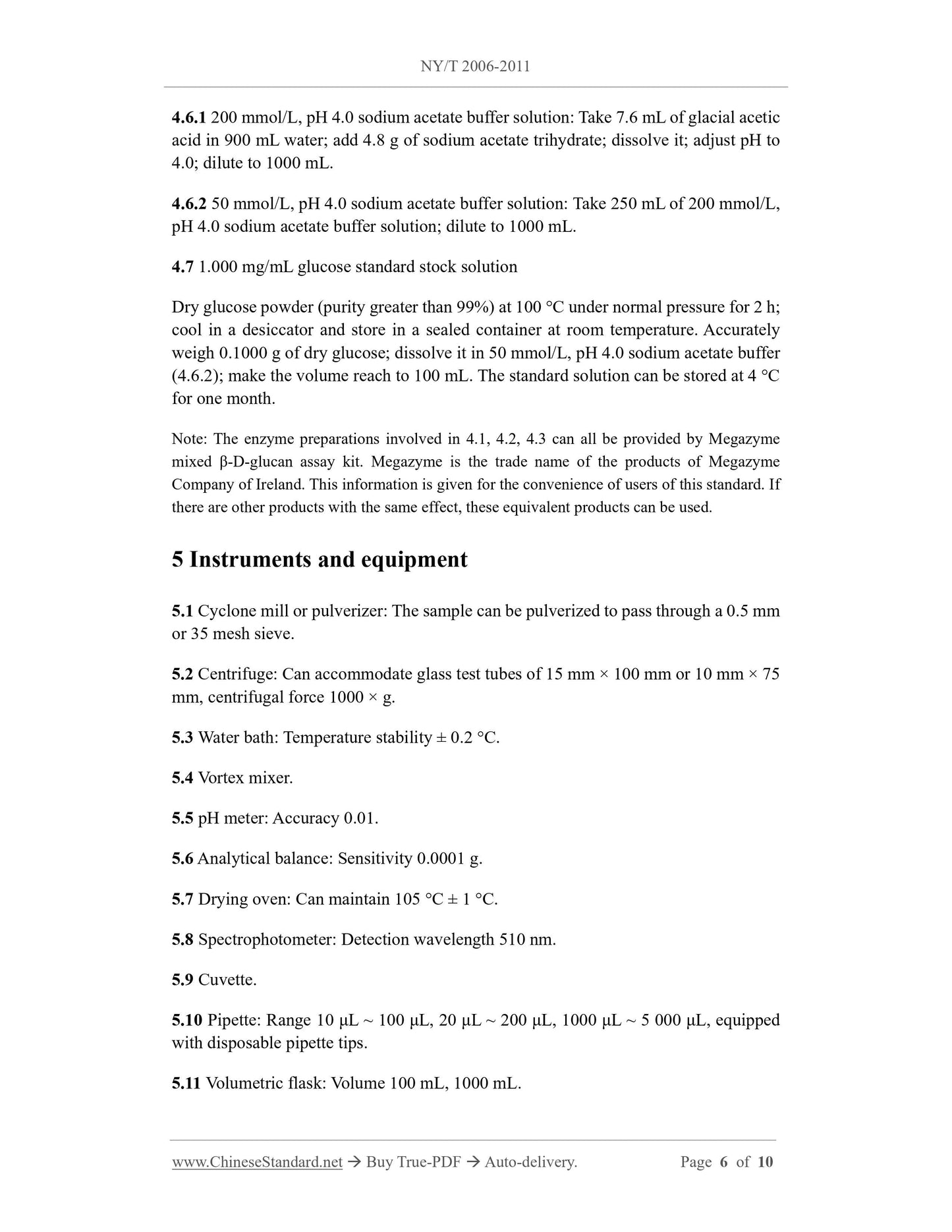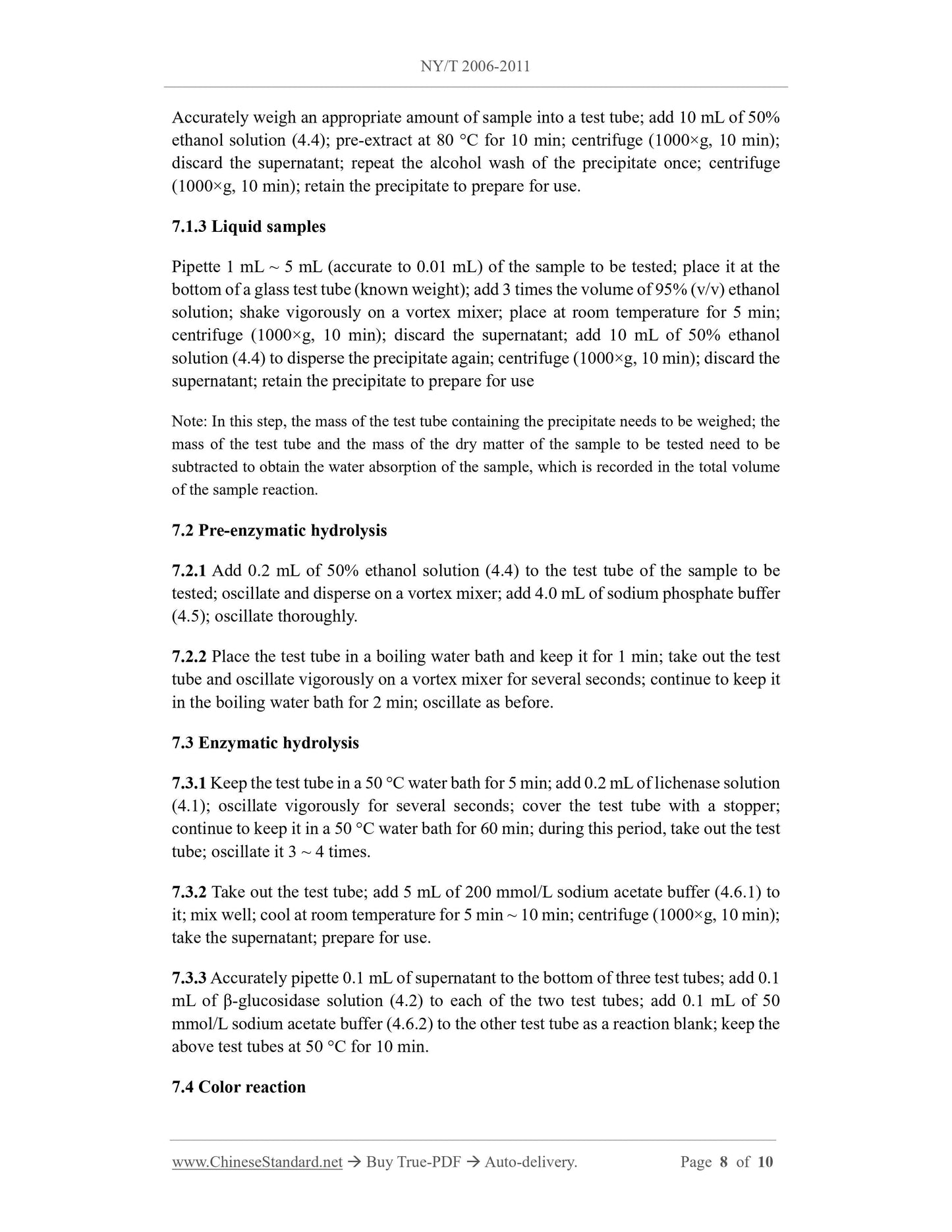1
/
of
5
www.ChineseStandard.us -- Field Test Asia Pte. Ltd.
NY/T 2006-2011 English PDF (NY/T2006-2011)
NY/T 2006-2011 English PDF (NY/T2006-2011)
Regular price
$155.00
Regular price
Sale price
$155.00
Unit price
/
per
Shipping calculated at checkout.
Couldn't load pickup availability
NY/T 2006-2011: Determination of β-glucan in cereal and its products
Delivery: 9 seconds. Download (and Email) true-PDF + Invoice.Get Quotation: Click NY/T 2006-2011 (Self-service in 1-minute)
Newer / historical versions: NY/T 2006-2011
Preview True-PDF
Scope
This standard specifies the enzymatic-colorimetric determination method for β-glucancontent in cereals and their products.
This standard applies to the determination of β-glucan content in oats, barley, highland
barley, rye and other cereals and their processed products (flour, bran, oatmeal,
beverages, etc.).
Basic Data
| Standard ID | NY/T 2006-2011 (NY/T2006-2011) |
| Description (Translated English) | Determination of ��-glucan in cereal and its products |
| Sector / Industry | Agriculture Industry Standard (Recommended) |
| Classification of Chinese Standard | B22 |
| Classification of International Standard | 67.060 |
| Word Count Estimation | 9,92 |
| Date of Issue | 2011-09-01 |
| Date of Implementation | 2011-12-01 |
| Quoted Standard | GB 434; SN/T 2370-2009 |
| Adopted Standard | AOAC Official Method 995.16, MOD |
| Regulation (derived from) | Ministry of Agriculture Bulletin No. 1642 |
| Issuing agency(ies) | Ministry of Agriculture of the People's Republic of China |
| Summary | This standard specifies the cereal and cereal products in ��- glucan content of the enzyme colorimetric method. This standard applies to oats, barley, green naked, rye and other grains and processed products (flour, teach leather, cereals, beverages, etc.) in the ��- glucan content. |
Share
